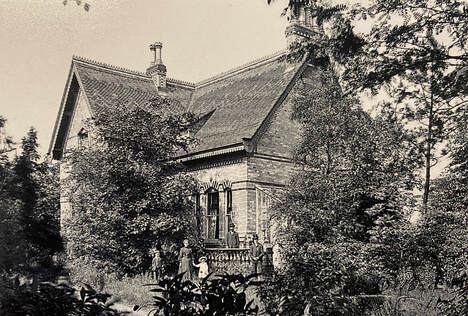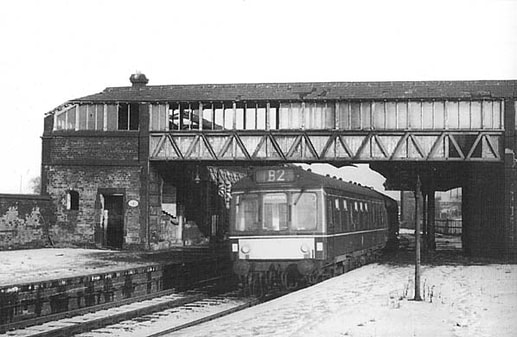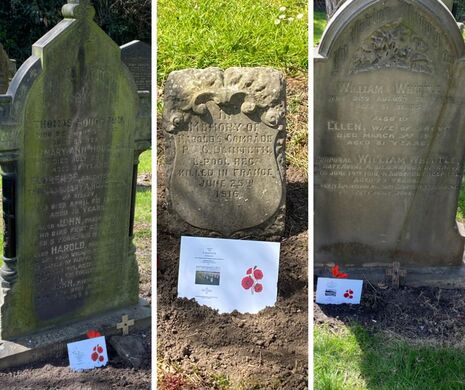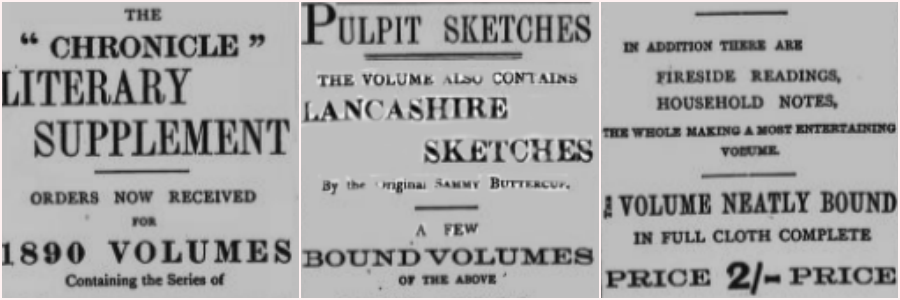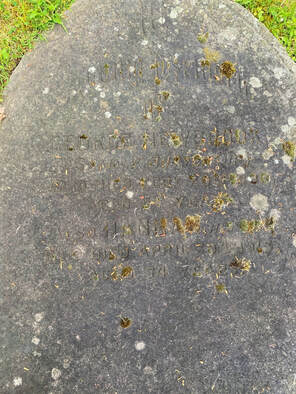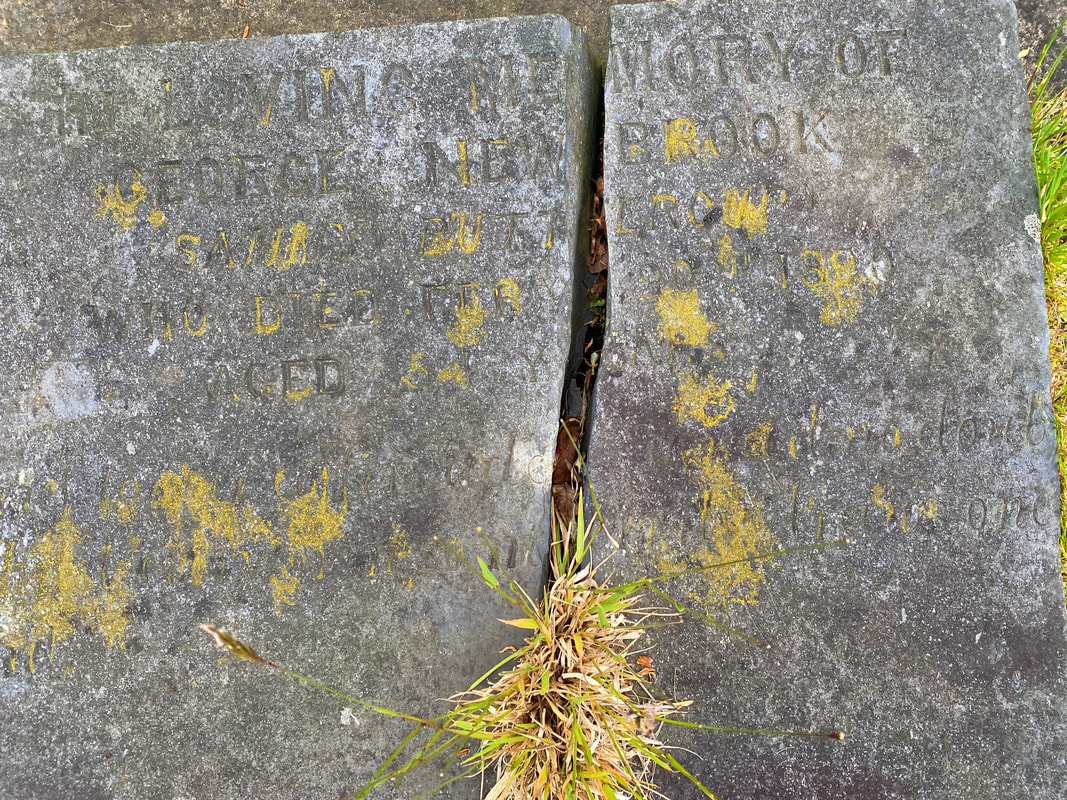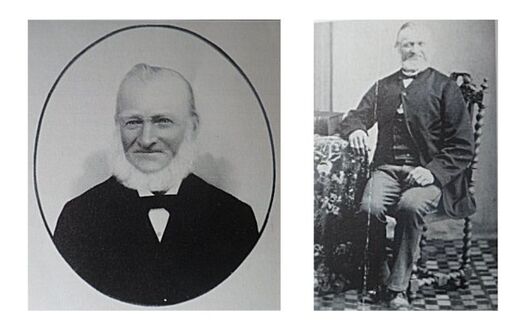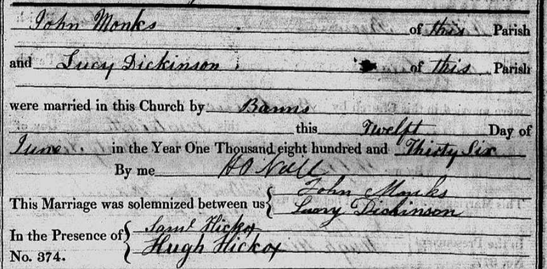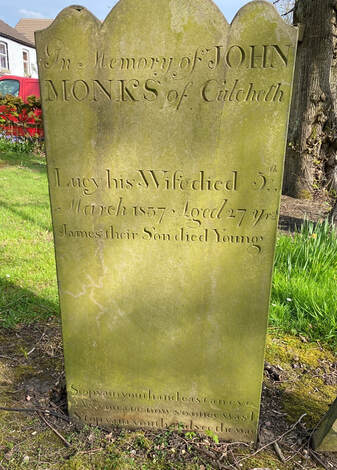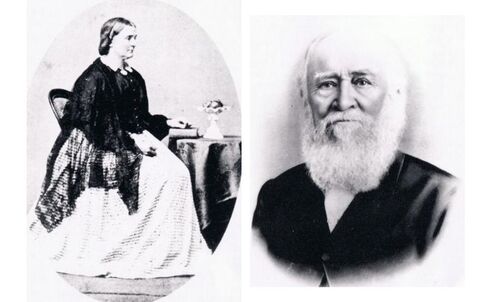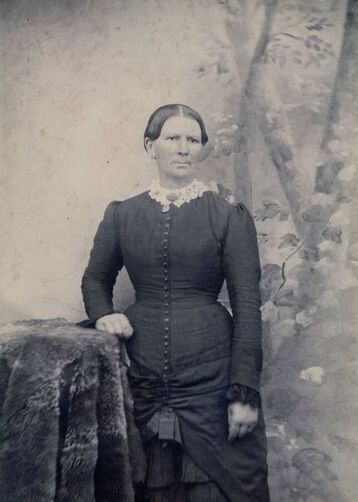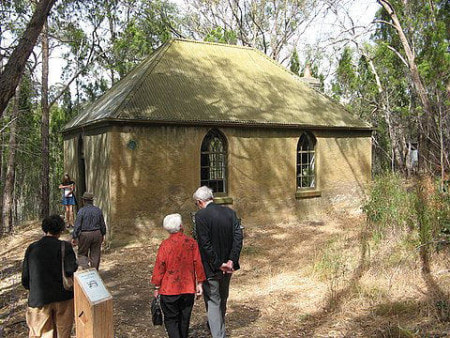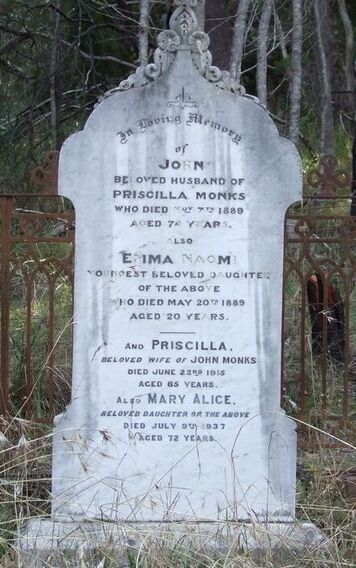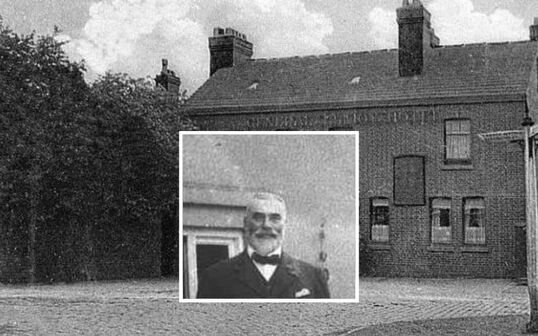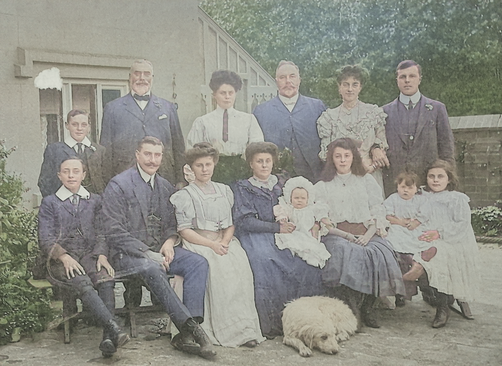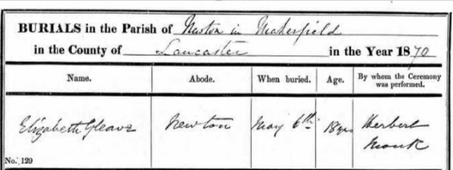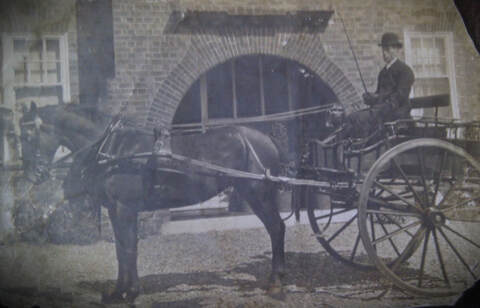Remembering World War IIAfter last month’s D-Day anniversary, it came to light that there are no WWII deaths remembered on Croft Village Memorial Hall. I spent some time looking up the details of those fallen in the second world war, who had lived locally.
I found the information for three of them, which I think should be added to the memorial. The missing WWII dead are: Driver James Swindell Of Lymm View, Risley (Formerly Risley Primitive Methodist Chapel) Died of wounds Italy 23/10/1944 Aged 21 Lieutenant Richard Moores Of 3 Lords Lane, Risley Died Italy 31/10/1943 Aged 29 Lance Bombardier James (Jim) Wood Of Lord Street, Croft Worked at Oak Tree Farm for Lewis Birchall Died Algeria 05/12/1942 Aged 35 Feedback has suggested that a handful of people think that the Memorial Hall was built originally as a WWI memorial and it should stay that way. However, the majority feel the names should be added. If it is decided that the Memorial Hall should stay as a WWI memorial, then we really shouldn’t be holding WWII services there and could perhaps consider Christ Church in future. Remembering World War IAfter looking much more deeply into the names of the fallen, there are some local names missing from the WWI list. The memorial hall plaque, which was unveiled in 2014, has the same 20 men as are listed on the Christ Church memorial. Christ Church on Lady Lane has two official
Commonwealth War Graves Commission graves from WWI. Both soldiers are buried in the churchyard. Both died from wounds obtained in WWI. Both died after the war had ended. Only one of them is on the memorial list. Gunner Samuel Yates is not included on the memorial. (The plaque in the church was unveiled whilst he was still alive, so it’s clear why he was missed off at first. I can only assume that by the time the plaque was next updated in 1945, a whole different generation was in charge, and he was sadly forgotten.) There are three WWI gravestones at Croft Unitarian Chapel, one being an official Commonwealth War Graves Commission grave (Harold Houghton).
Harold Houghton is rightly named on the Christ Church and Memorial Hall plaques. The other two are Lance Corporal William Whittle and Private George Daintith. George Daintith’s stone was originally in the grave space of Harold Houghton’s grave and reads IN MEMORY OF HAROLD’S COMRADE PRIVATE GEORGE DAINTITH LIVERPOOL REGIMENT KILLED IN FRANCE JUNE 25TH 1916 I can’t imagine how Harold would feel knowing that he was named on the village memorial whilst George wasn’t. William Whittle is named on his parent’s grave, with the quote ‘DUTY NOBLY DONE’. The Risley War Memorial
This memorial was re-erected after the demolition of Risley Presbyterian Church in 1971. The triangular stone had previously topped the clock of Risley Presbyterian School (Closed as a school in 1932) John Winterburn writes: ‘…the school was closed and became merely a polling station. Now (1974) there is nothing but the site, and a wooden hut on it at election times. Two relics only remain. Croft Parish Council have kept the War Memorial Tablet and old clock which were part of the school fabric. Someday, they hope to erect them again in another place.’ Taken from A History of Education in Culcheth. Named on the memorial from WWI are: Harold Houghton George Daintith William Whittle Norman Gibbins Again, only one of these names is on the Plaque at the Village Hall and in Christ Church. So altogether, there are four names missing from the Memorial Hall Plaque which I believe should be on there. Gunner Samuel Yates Private George Daintith Lance Corporal William Whittle Gunner Norman Gibbins The Church may have had (and may still have) other reasons for not including these names, but as the Memorial Hall is for the use of all residents and is in the centre of the village, I think the Croft community should add the missing names from WWI to the Village Hall memorial. Alan Sharpe’s book states that the names on the church plaque were taken from the Croft 1901 census. This can’t be true for several reasons: - The records were sealed until 2001 - If they had special access to a census, the 1911 census would be much more accurate than 1901 - Harold Houghton lives in Leigh, not Croft on the 1901 census, yet still made it onto the list - Even on the 1911 census, both Harold Houghton and George Daintith lived at the Old Noggin Inn in Risley, yet Harold was on the list of Croft war dead, without George. Why Should We Add Missing Names?
Adding missing names ensures that the memorial accurately reflects all those who sacrificed their lives. It honours every individual's contribution and maintains the integrity of the historical record. Every person who served and died deserves recognition. Updating memorials to include missing names shows respect for those individuals and acknowledges their sacrifice. For the families and communities of those whose names were initially omitted, adding their loved ones' names can provide a sense of closure and recognition. It validates their loss and ensures their relatives are remembered alongside their peers. A complete memorial serves as a more comprehensive educational tool, providing a fuller picture of the war's impact on the community. It helps future generations understand the breadth of sacrifice made during the wars. Omissions may have occurred due to oversight, lack of records, or other reasons. Correcting these omissions is a matter of historical justice, ensuring that every individual's contribution is duly noted and remembered. Updating memorials to reflect all who served and died maintains the memorial’s role as a true representation of the community's history and collective memory. It reinforces the values of inclusivity and thoroughness. I will be approaching the committee for the Memorial Hall with this information and would also welcome any feedback from residents. Temperance Standard Bearers of the Nineteenth Century
|
|
The original 2' square stone, made of slate, must have been unsuitable from damage and was replaced with the ledger stone. Later, the original was restored and added to the ledger. It has on it the quote:
“Grief to our coffin adds a nail, no doubt; Whilst every grin, so merry, draws one out.” |
LEIGH CHRONICLE & WEEKLY DISTRICT ADVERTISER
FRIDAY 9TH MARCH 1888
LANCASHIRE SKETCHES
No. XXXII – LITTLE BILLY
BY THE ORIGINAL SAMMY BUTTERCUP
Neaw aw may as weel tell yo as heaw Croft's a varry aynshunt place, an th' reeason on't not bein menshund i'th Hist'ry o' Hinglond is bocose thoose ut wrote it didno goo to th' trubble o' payin it a visit to mak enquiries.
Neaw iv yo'll look i' Scriptur yo'll find it sez summat abeawt Moses bein fun i' some bullrushes, but it doesno say eggsactly wheer thoose rushes wur; but, iv aw remember reight, thoose rushes wur asoide o' where th' Booard Skoo is neaw, tho' th' rushes wur taen away mony a year sin to mak porayter hampers on.
Then agean, in another place, yo'll find summat abeawt Jonah swallerin a whale; but that's sich greyt while sin ut thers no trace left i' Croft o' noather Jonah nor t' whale, an th' lond bein plow'd up so mich so as to plant green peighs an carrots, its mich iv they ever find ony trace on't.
In another place yo find it menshund abeawt Jacob's ladder. Neaw thers a greyt mony ladders i' Croft, an they'n getten mixt up so mich ut thers no tellin which wur Jacob's ladder.
Neaw thers an owd smithy at Croft-bin theer monya hunderd year -- an accordin to th' Hist'ry o' Lankesher, it wur at this smithy wheer Oliver Crummell stopt to get shoon put on his hosses when he wur on his rode to Preston. When th' hosses ud getton their shoon on, he marcht his army to Leighth, an ther wur feet marks ov his cannon wheels uppoth hee rode for mony a year after, but thers no trace left on um neaw.
Oliver Crummell stopt o neet at th' King's Arms, Leighth, an th' next mornin, after he'd blown Whalley Abbey deawn, an Windleshaw Abbey, Sant Helen, he marcht his sowgers to l'reston.
Aw'm gettin off mi tale a bit, but as Croft wur a varry nooated place i' owden toimes, an nob'dy seeums to know mich abeawt it at th' present toime, aw think its just as weel to gie my readers a bit ov a descripshun on't.
It's not a varry largely-populated place, an at th'present toime its mooastly populated wi men, wimmin,an childer. Ov course thers a toothri hosses an keaws,an a toothri pigs an fowl, an loikewoise horn'd ponies an a four-legg'd cock, but aw dunno want to enter into nat’ral hist’ry.
Neaw ther's some varry owd inhabitants at Croft - some on ums bin livin theer ever sin they flit fro some-wheer else, au some's lived theer o ther loif-an its varry seldom ut a deeath taks place theer, becose its sich a healthy little spot.
Yo seen they get th' sea breeze fro th' Isle o' Mon every mornin bi t’ fust train, an th' climate theer doesno vary so mich-thermometers theer never goo deawn aboon 90 degrees below zero i'winter, nor aboon 327 n ‘arf i' summer.
Ther isno a doctor for miles, becose they dunno need ony. Thers noather warkheawses, ragged skoos, infirmaries, nor prisons, an th' inhabitants behave theirsels so weel ut it nobbut needs one poleesmon.
Some foak may happen think ut thers no building at Croft nobbut a toothri farm-heawses ; but lemmi tell yo ut thers a grond brewery theer, wi twelve acres ov a orchard attatch'd to't, wheer they con get moor gooseberries i'th seeason nor what ud mak apple dumpling enuf to feed o Lankesher.
Then thers a Church, a Catholic Chapel, a Unitarian Chapel, a Booard Skoo, a Pooast Offis, a Penny Bank, a Burial Society, Horticultural Society, an a Oldfellas' Lodge, but aw conno understond these Oddfellas at o, becose they're welly o married men.
Th' "Charge of the Light Brigade" took place at Croft. Aw dunno meean thoose " noble six hundred, becose ther wur aboon six theausand o' these, an Paddy Flynn wur chargin un wi a leeted candle an a toastin-fork, an it wur set deawn i' hist'ry as th' " Massacre of the Innocents."
Th' Battle o' Wayterloo wur fowten somewhere between Charley Wild's Farm an th' General Elliot Hotel, an th' Hindyun Mutiny took place in a field belungin to Measter Sankey.
Dick Turnip stopt o neet at Croft when he wur on his rode fro Lunnon to York, an th' Mail Coach fro Liverpool to Jerusalem used to stop three days so as th'passengers could goo o' getherin strawberries.
Ther used to be a deol o' weyvin an fustin-cuttin i'Croft, an th' King o' Shanty onest went theer to be mezzerd for a numbrell an a pair o' breeches.
Aw've just dropt across a bit o' poetry abeawt Croft, ut wur written bi oather Lungfella or Shortfella, somewheer abeawt th' toime o'th fust Revolushun i'Seringapotater, so aw'l just gie yo a copy on't :-
CROFT
Thers a little spot co'd Croft,
O, aw've bin theer varry oft,
Its as nice a little spot as e'er wur seen ;
With its ripplin brooks an rills,
With joy my heart it fills,
An its grond i' summer, when its fields are green.
Thers ponies theer wi horns,
A farmer plagued wi corns,
An a cock ut struts abeawt wi four legs ;
A clock i'th frunt o'th skoo,
Tho' too lazy for to goo,
An a duck they sen ut oft lays gowden eggs.
Then thers Polly Ann McGuire,
With a yead as red as foyar,
Thers Paddy Flynn an Jeremy O'Neil ;
An thers little Jonty Roe,
Wi a blister on his toe,
An a greyt big mustard playster on his heel.
Thers a farmer theer wi't gout,
An his woife waynt let him out,
An a widder woman wi a wooden leg,
An then thers Jemmy G .,
Sometoimes he gets on th' spree,
An tho' wealthy oftoimes bacco he will beg.
Thers another chap --- Pee Heyes --
He's a boy for heytin peighs,
An little Sammy Yates goos killin pigs ;
Then thers little Jemmy Shaw,
He loikes a bit o' jaw,
An he's varry fond o' doncin Irish jigs.
An thers Charley Wild -aw'm sure
He is a perfect cure-
But as good a bit o' comp'ny as yo'il find ;
He could tell yo mony a tale
As ud mak yo'r face turn pale,
An he sez keaws' tails are allus hung behind.
Jemmy Johnson keeps a farm,
An he's seven cats i'th barn,
He sez he keeps um theer the rats to scare;
Then thers Roddy wi his gun,
Sometoimes he has some fun --
He one toime kill'd a hedgehog for a hare.
But to mi tale.
Little Billy warks at that smithy " hereinbefore menshund," as th' lawyers sez. He's a varry quiet an daysent soart ov a chap, an aw'm sartin his woife's getten a good husband.
Neaw Billy wauks abeawt two mile to his wark in a mornin an two mile back agean at neet, an he's never missin nobbut when he's absent.
His measter wanted to goo whoam a bit sooner tother day, so he towd Billy to put th' hoss i'th trap, an he went to get a gill o' ale while Billy geet it raddy.
After he'd bin i'th aleheawse abeawt hauve an heawr, he went eawt to see what Billy wur doin, an he fun him stondin theer lookin gradely puzzled.
"Is it raddy yet, Billy ?" th' measter axt.
" Aye, aw think it'll do neaw, " sed Billy.
" But what's this doin here ?" th' measter sed, when he seed th' hoss's collar lyin uppoth floor.
" Why, aw couldno find a place for that," sed Billy, "an aw thowt it ud happen do witheawt."
" But it'll not do witheawt," sed his measter, "look sharp an get it on, becose aw want to be gooin."
" Wheer does it goo!" sed Billy, as he poikt th'collar up an lookt at it.
" Why, it goos on it neck, to be sure," sed his measter, an then he went in for another gill.
Billy pood th' yead gear off th' hoss an tried to put th' collar on, but he kept th' narrow eend up, an for o he kept thrutchin an swattin, an welly shuved th' hoss i'th doytch, he couldno get th' collar o'er it yead.
" Aw'll be heng'd iv aw con understond this," sed Billy to hissel, as he stared fust at th' collar an then th'hoss's vead, "this here's oather gone less or else th'hoss's yead's gone bigger.But it happen doesno goo o'er it yead, " he sed, as a fresh thowt struck him.
Then he took th' hoss eawt o'th trap, an geet booath it hinder legs throo t' collar, an tried to get it on that rode, but it wur no use, for when he geet it up to it tail he couldno get it no furr.
"Its no use tryin, " he sed to hissel, as he clapt th'collar uppoth floor, "thers summat wrang somewheer. Aw darst bet th’ Bank o’ Hinglond, Iv aw had it, ut that hoss wern't mezzer'd for this collar.'
Th' measter coom cawt agean in a bit to see iv trap wur raddy, but it wur just same as it wur afoar.
" Hasn to getten that collar on yet, Billy ?" he sed.
" Nawe, " sed Billy, "an aw'd loike to see th' chap as con put it on.
"Put it on ? Why, it goos on yezzy enuf," sed th' measter, as he geet howd o'th collar and slipt it o'er th' hoss's yead, an Billy stood starein at him loike a thunner-struck grasshopper.
Billy couldno gie o’er thinkin abeawt th' hoss's collar. It wur th' topmost thing in his mind o neet, in fact he actily dreamt abeawt it that neet, geet up in his sleep, an wakken'd th' woife wi tryin to shuve th' hondle o'th kettle o'er her yead.
Then ther wur a gradely flare-up, becose th' woife thowt as heaw he wur tryin to murder her, till Billy wakken'd an towd her abeawt th' hoss's collar.
Heawever, things are o reight agean neaw, an Billy ul know heaw to put a collar on i' futur.
He married Lucy Dickinson on 12th June 1836 at All Saints Church in Wigan.
John was one of the Unitarians ejected from Risley Chapel in 1838 and was involved in the building of Croft Unitarian Chapel.
John married Priscilla Appleton (also from Lancashire, sailing in 1839 on a different ship) in 1850 and they had ten children.
They were all buried at the Shady Grove Unitarian Church Cemetery.
The church still stands today and is still active. The building is listed with the South Australia Heritage Register.
He grew up at Heath Farm with his parents and his older half-brother, Reginald Owen.
In 1872 he set up business at Heath Farm, with £500 cash from his mother. He then received around £6 – 7,000 in capital from his father’s estate, as well as the General Elliot Hotel, a cottage and more land.
He married Mary Ann Millner on September 13th 1881, at Christ Church in Croft. They had eight children together, Annie, Gwendoline, Ernest , Sydney, Dorothy, Margaret, Lilian and Charles.
In 1892 Enoch purchased Heath Farm and it’s land, as well as Eaves Brow Farm, Croft and Cross Lane Farm, Culcheth for £7038. He also acquired New Hay Farm for £4200.
He continued in business as a farmer and was “one of the best known horse dealers in the North of England”. He was a member of the Southworth with Croft School Board for a number of years.
He carried out extensive business across the country and made large profits.
Enoch lived an extravagant life involving frequent travelling abroad, motor cars and racing trips and was a well-known and much liked gentleman.
In 1911 his unsecured debts were £12878 and his free assets just £900. He was subject to a bankruptcy hearing in July 1912 at Warrington, which ran through to October.
He stayed at Heath Farm after bankruptcy and even continued in horse dealing, as he was summoned to court for a contravention of the Defence of the Realm Act in 1918 after selling a horse without a licence earlier that year.
There is little information available after 1918, but it seems that the family moved to Sale as he passed away there on 2nd November 1928 and was cremated at Manchester Crematorium.
The Sankey Family at Heath Farm
BACK ROW: SIDNEY, ENOCH, ANNIE, REGINALD OWEN (ENOCH'S HALF BROTHER), ANNIE OWEN (DAUGHTER OF REGINALD), THOMAS PARK (SON-IN-LAW OF REGINALD)
FRONT ROW: ERNEST, REGINALD SANKEY OWEN (SON OF REGINALD), FANNY LEES (DAUGHTER-IN-LAW OF REGINALD), MARY ANN (HOLDING MARGARET), GWENDOLINE, LILIAN, DOROTHY
Warrington Examiner
Saturday 7th May 1870
A most painful event occurred at Newton on Monday last, casting a gloom over the whole neighbourhood.
This was the suicide by drowning of a most respectable young woman, named Elizabeth Gleave, aged only 18, domestic servant of Mr. Barclay, one of the overseers at McCorquodale’s printing works.
It appears that she and a young man names Michael Ward have been courting, but for some reason or other he refused to go out with her last Sunday. An acquaintance of Michael Ward, a married man named John Jones, who was aware that there was some little lover’s quarrel between the young folks, went and told Lizzie that he knew why Michael would not take her out, and if she would go with him, he would show her the reason for it.
Either by direct expression or by inuendoes, he led the young woman to believe that Michael was walking out with another girl, and if she would go with him, he would take her where she could have ocular demonstration of her lover’s supposed delinquency. Lizzie took Jones at his word and went out with him. Jones took her round by Hermitage Green to Winwick, where he persuaded her to enter the Swan Inn and have some drink, which took such effect upon her as to render her partially insensible.
He then took her in the direction of Newton, but what took place on the road no one can tell. Certain it is that the poor girl was exceedingly ill and sick. Her belief that her lover was untrue to her, and the shame to which she had been brought by Jones, prayed so much on the poor girl’s mind, that after writing two letters of farewell – one to her lover Michael Ward, and the other to her young mistress, Miss Barclay – she committed suicide by throwing herself into the ornamental lake at Newton, on Monday.
Miss Barclay, entering the house after the unfortunate young woman had left, found the letters, and seeing one directed to herself, she opened it, and discovered that poor Lizzie, whom they had looked upon as almost one of their own, had destroyed herself.
Lizzie had indicated in her letter to Miss Barclay the spot where she intended throwing herself into the lake, and upon Miss Barclay immediately putting herself in communication with the police, the lake was dragged, and the body found at the exact place mentioned by the unfortunate girl.
The inquest was held yesterday before C. E. Driffield, Esq., at the Blue Lion, Newton, when the above facts were given in evidence. The jury returned a verdict of ‘Suicide while in a state of temporary insanity.’
The coroner praised Michael Ward, the lover, for the honest and straightford manner in which he had given evidence; but administered a severe censure upon John Jones, the married man, for the manner in which he behaved to the girl. The following is the unfortunate girls farewell to her lover: -
Newton, May 2, 1870
My dear Michael,
When you get this I shall be no more. You may guess the cause of my death. I never thought when we first met what would be the result of it. I suppose you know all about Sunday night. I only wish I had known before, it might have saved me; but now, as it is not what I hoped for, it is no use living. You have my heart; and oh, that I might have had yours, Oh, that we had never met, for to part is death to me. I did not think that you would prove so false to me as it seems you have done. You ought never to have thought of me when you had another – whom, I hope, you will not forsake, but will make your wife. Mend your ways, dear Michael, and give one thought to me, whose heart you have broken. Our acquaintance was not long, and I will now say farewell.
Yours ever,
LIZZIE GLEAVE
She was buried on 6th May 1870, aged just 18.
Leigh Chronicle and Weekly District Advertiser
Friday 18th February 1910
Mr. F. H. Jones, deputy coroner, held an inquest on Friday afternoon, at the Plough Inn, regarding the death of Edward Monoghan, of Heath Lane, Croft, whose body was found on Thursday morning in a pit on the farm occupied by Mr. James Thomason, Heath Lane.
Mr. Cawthorne was appointed foreman of the jury.
The first witness called was Jane Monoghan, widow of the deceased, who deposed that her husband was 40 years of age, and was a coachman in the employ of Mr. E. W. Sankey, Heath Farm.
John Ingham, employed by Mr. J. Thomason, farmer, said about eight o’clock on Thursday morning he saw the body lying face downwards in a pit close to the farm buildings. He informed his master. F. C. Butler, who was sent for, was quickly on the spot, and the body was at once recovered, but life was found to be extinct.
The jury returned a verdict of ‘Suicide while in an unsound state of mind.’
The funeral took place on Sunday afternoon at St. Lewis R.C Church. In addition to the relatives etc., the fellow workmen of the deceased employed by Mr. E. W. Sankey preceded the body to the churchyard, and after the funeral ceremony placed upon the grave a costly artificial wreath bearing the following inscription: “A token of respect from his employer and fellow workmen at Heath Farm, Croft.”
Mrs. Monoghan is left with seven young children.
Author
Cheyvonne Bower
I am a local and family historian with a passion for the past.
I am a member of the
Manchester & Lancashire Family History Society.
Archives
July 2024
June 2024
April 2024
March 2024
February 2024
January 2024
November 2023
August 2023
April 2023
March 2023
December 2022
November 2022
October 2022
September 2022
August 2022
May 2022
April 2022
March 2022
February 2022
January 2022
Categories
All
Christ Church
Civil War
Crime And Punishment
Croft In The News
Croft Then And Now
Croft Unitarian Chapel
Culcheth
Health
Information
Irlam
Leisure
Listed Buildings
Maps
Newspapers
On This Day
People
Public Houses
Risley Chapel
Winwick





